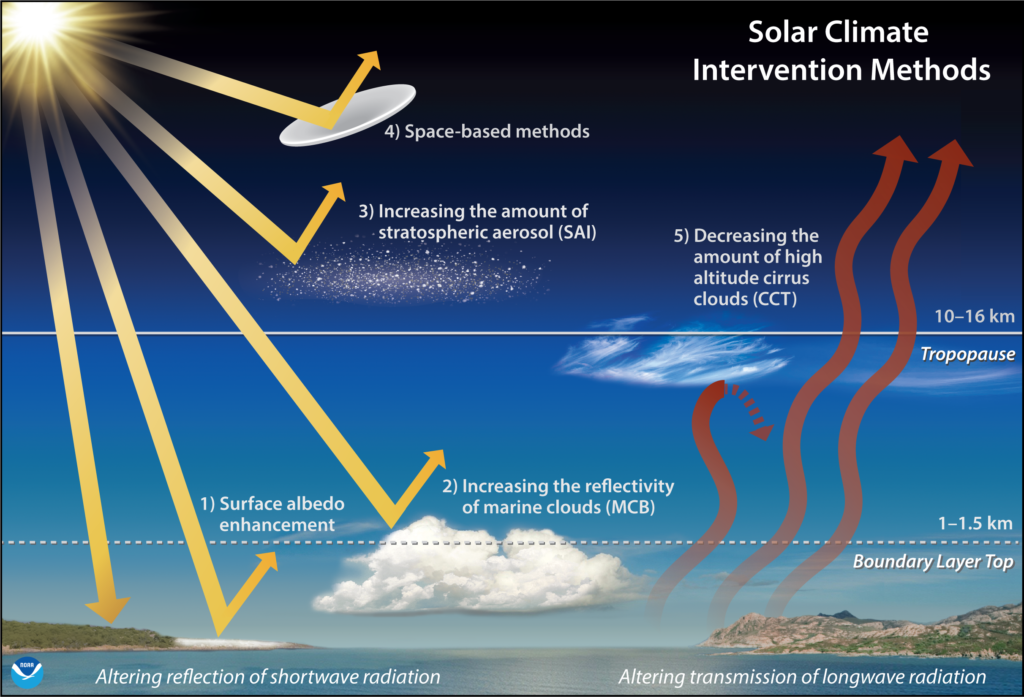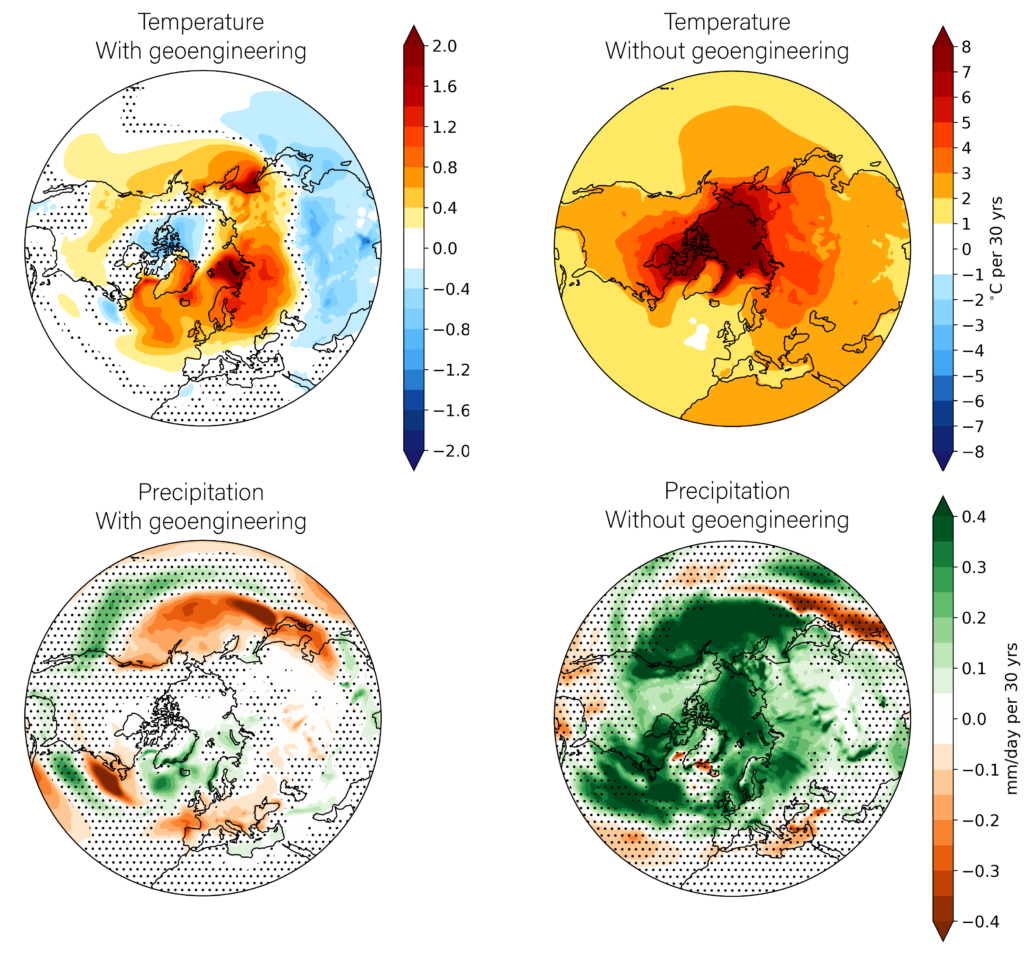A new modeling study led by two NOAA researchers has highlighted the vast challenges and potentially damaging consequences of solar geoengineering actions large enough to ward off extreme warming by the end of the 21st century.
The study explored a set of climate model simulations generated by researchers at the National Center for Atmospheric Research (NCAR) called the Geoengineering Large Ensemble.

A group of 20 simulations projected the climate-forcing influence of hypothetical sulfate aerosol injections in the stratosphere sufficient to reflect enough sunlight to counter global warming from rising carbon dioxide levels throughout the end of the 21st century.
According to the study, which was published in Atmospheric Chemistry and Physics, the model required enormous inputs of sulfur dioxide to counter the expected warming. As much as 50 million metric tons would need to be continuously injected into the stratosphere every year by the end of the century to obtain zero global-mean temperature change even as carbon dioxide continues to increase.
Lead author Antara Banerjee, a CIRES research scientist working at NOAA’s Chemical Sciences Laboratory, said, “While these sulfate aerosols would largely mitigate the impacts of greenhouse gas-induced climate change, there are unintended side effects in these simulations that we need to understand.”
For example, while the simulations mitigated around two-thirds of expected winter warming trends due to climate change in Eurasia, a robust surface warming of up to 1.5°C, (3°F), every 30 years, still occurred.
According to the study, another side effect identified in the simulations is reduced precipitation in the Mediterranean during winter, when the arid region normally receives most of its annual moisture. This begins mid-century, when the simulated geoengineering effort scales up. However, the loss of winter precipitation is balanced by an increase in summer moisture. The opposite would occur in Scandinavia where they would experience wetter winters and drier summers.

To read the full study, click here.



